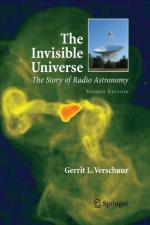|
This section contains 1,839 words (approx. 7 pages at 300 words per page) |

|
Overview
In 1932, while attempting to determine the source of static interference in radio communication systems, American engineer Karl Jansky (1905-1945) discovered the existence of radio waves emanating from beyond the Earth. Jansky traced all but one of the types of interference he encountered to terrestrial phenomena (e.g., thunderstorms). Jansky concluded that the elusive third source of interference was extraterrestrial in origin and that it emanated from a region of the sky in the direction of the center of the Milky Way. Although Jansky's findings were initially ignored, eventually his papers gave rise to the science of radio astronomy. Since Jansky's discovery, radio astronomy has advanced to become one of the most important and productive means of astronomical observation, providing astronomers with a second set of eyes with which to view the Cosmos.
Background
In the nineteenth century Scottish physicist...
|
This section contains 1,839 words (approx. 7 pages at 300 words per page) |

|


